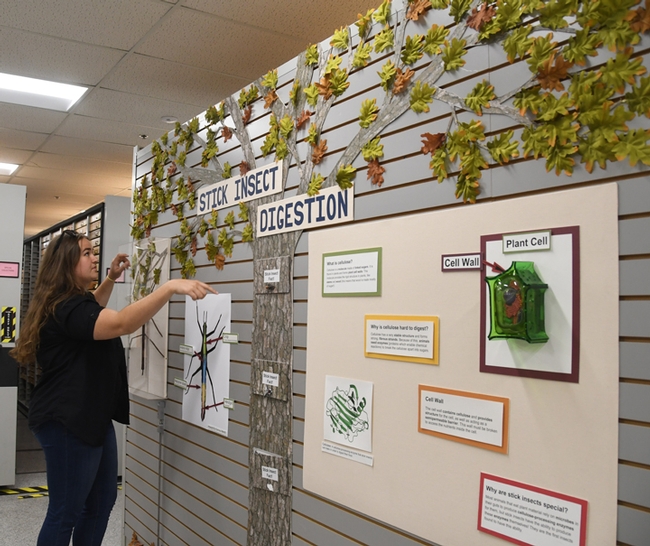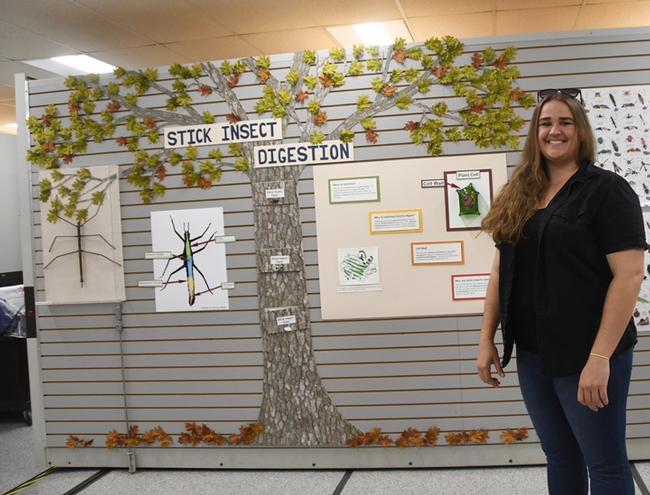- Author: Kathy Keatley Garvey
The Bohart Museum of Entomology is showcasing the innovative research of UC Davis evolutionary ecologist Leslie Saul-Gershenz, who studies how blister beetle nest parasites mimic the sex pheromone of digger bees.
Bohart associate Emma Cluff created the wall display, “Digger Bees and Their Nest Parasites,” which examines the life cycle, research process, results, research challenges and implications.
The display runs through May 16. The Bohart Museum is located in Room 1124 of the Academic Surge Building on Crocker Lane, UC Davis campus. It is open to the public, Monday through Thursday, from 9 a.m. to noon and from 1 to 5 p.m., except on holidays.
Gershenz, associate director of research, Wild Energy Initiative, at the John Muir Institute of the Environment, UC Davis, researches the chemical ecology and parasite-host interactions of these solitary native bees and their nest parasites across the western U. S., including the coastal sand dunes of Oregon and the Mojave Desert in south-central California.
Gershenz, who holds a doctorate in entomology from UC Davis, did much of her work at the Mojave National Preserve, where she tracked the solitary bee Habropoda pallida and its nest parasite, a blister beetle, Meloe franciscanus.
The larvae of the parasitic blister beetle produce a chemical signal or allomone, similar to that of a female bee's pheromone, to lure males to the larval aggregation. The larvae attach to the male bee on contact and then transfer to the female during mating. The end result: the larvae wind up in the nest of a female bee, where they eat the nest provisions and likely the host egg.
Saul-Gershenz' experiments found the allomones “released by each population of M. franciscanus triungulin (larvae) mimic the pheromones released by a specific species of Habropoda bees native to their local habitat,” Cluff wrote in the display. “Leslie found that these differences had a genetic basis. She also found that local bee species were more attracted to the allomones released by their local triungulin population.”
“The M. franciscanus triungulin hatching is synchronized with the emergence of adult female Habropoda bees,” the display reads. “The triungulins aggregate on plant stems and release an allomone blend which attracts male bees. The aggregation of triungulins hop on to male bees who have chosen to investigate the allomone. Once the male bees find a real female bee, they mate in a ‘mating ball' at which time the triungulins transfer to the female. All this effort is so that the triungulins can get a free ride to the nest that the female bee lays her eggs in. Once inside the nest burrow, the triungulins will feed on the net provisions and likely the egg itself and will remain there until they emerge as adults the following winter.”
Results? “Leslie's experiments found that the allomones released by each population of M. franciscanus triungulin mimic the pheromones released by a the specific species of Habropoda bees native to their local habitat,” Cluff wrote. “Leslie found that these differences had a genetic basis. She also found that local bee species were more attracted to the allomones released by their local triungulin population.”
The research contributes to the understanding of the communication signals of bees in the genus Habropoda. Saul-Gershenz is currently finishing two research papers: the basic biology of digger bee Habropoda pallida, and the biology of the silver digger bee Habropoda miserabilis.
She and her husband, Norman, are the co-founders of the Bay Area-based SaveNature.Org. The international conservation consortium works with partners to protect ecosystems around the world.
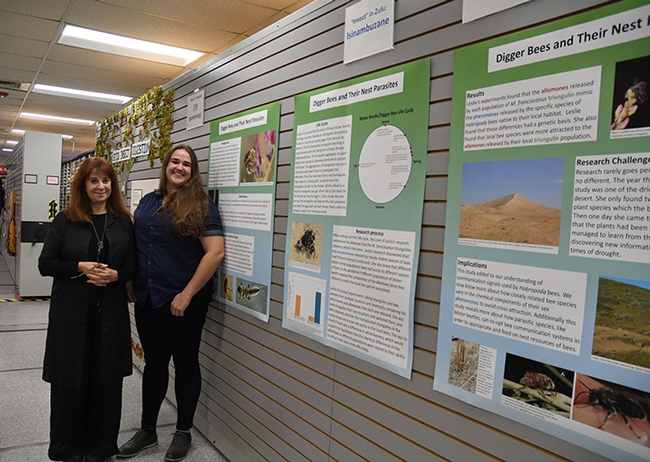
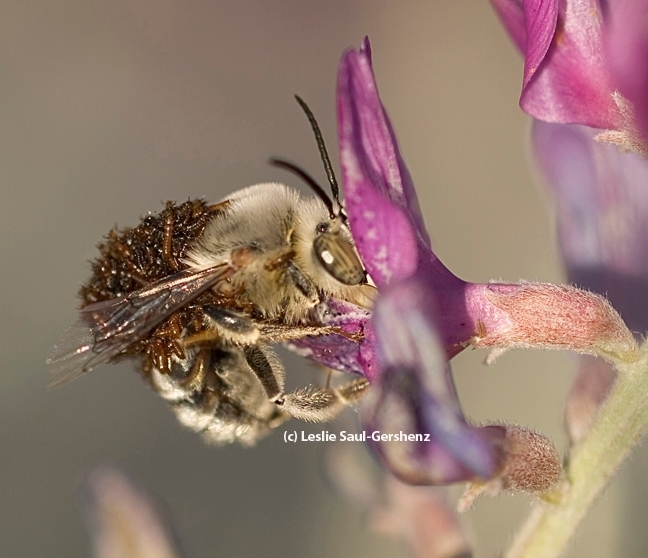
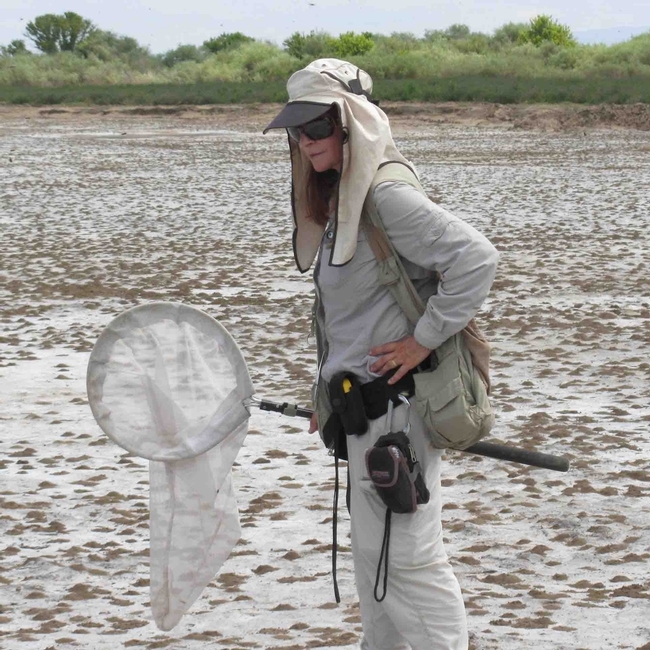
- Author: Kathy Keatley Garvey
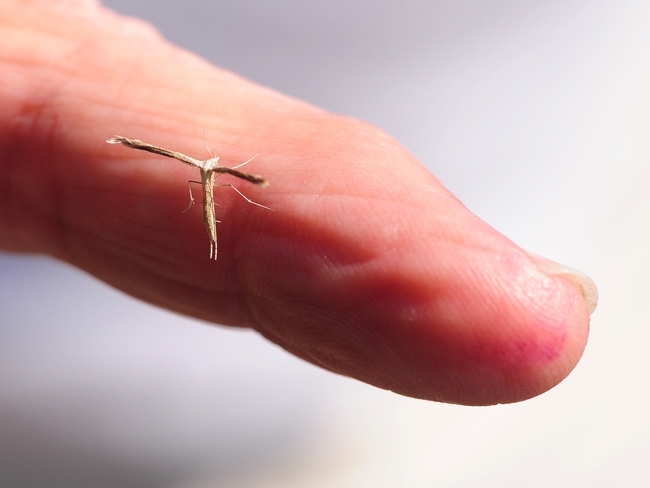
The Bohart Museum of Entomology will host its annual Moth Night--free and family friendly--from 8 p.m. to 11 p.m. on Saturday, Aug. 3. The event takes place the week following National Moth Week, July 20-28.
Blacklighting will take place just outside the museum, located in Room 1124 of the Academic Surge Building, 455 Crocker Lane. For blacklighting, the Bohart scientists use a hanging white sheet that's illuminated by ultraviolet (UV) light and powered by a generator. Throughout the evening, visitors can see what insects are attracted to the white sheets.
Several scientists will be on hand to discuss moths and answer questions. They include senior museum scientist SteveHeydon of theBohart Museum; Jeff Smith, curator of the the moth and butterfly specimens; andBohart associates "Moth Man" John DeBenedictis and GregKareofelas. The best time to see the moths in the light traps is later in the evening, closer to 9:30 or 10, according to LynnKimsey, director of the museum, andTabatha Yang, education and outreach coordinator. Indoor activities--checking out the displays and participating in the craft activity--are planned prior to theblacklighting.Bohart associate Emma Cluff curated a hallway display featuring silkworm moths and silk that links entomology and culture. The silkworm moths are from the Bohart museum collection, and the silk cloth has been donated by silkworm moth authority Richard Peigler, a biology professor at the University of the Incarnate Word, San Antonio, Texas. "He sent us a collection of more than 10 pieces of cloth and several pieces of jewelry that utilize cocoons," Cluff said. "He has sent similar collections of cloth to other research institutions."
"These textiles represent work that has been done for centuries, and in some cases millennia, throughout Asia," Cluff said. "The relationship between these artists and the insects that provide their materials is beautiful and elaborate and we wanted to bring it to light."
The free family craft activity will involve creating silk moth cocoon necklaces. "Kids will be able to color and string white cocoons and make necklaces or bracelets with them," Cluff said.
Free refreshments--hot chocolate and cookies-- will be served.
Last year more than 140 spectators attended Moth Night. The first insects to show up were the scarab beetles or "June bugs" (referring to certain species of scarabs). Beetle expert Fran Keller, assistant professor at Folsom Lake College who received her doctorate in entomology from UC Davis, identified the first scarab beetle to arrive as a Polyphylla sp. or lined June beetle.
Bohart associate and "Moth Man" John De Benedictis listed the species sighted at Moth Night by family. Among them:
- NOCTUIDAE: Spodoptera exigua (Beet Armyworm Moth), Proxenus sp. (probably P. mindara)
- GEOMETRIDAE: Prochoerodes truxaliata
- PYRALIDAE: Ehestiodes gilvescentella
- TORTRICIDAE: Cydia latiferreana (Filbertworm Moth), Grapholita prunivora (Lesser Appleworm Moth)
- GELECHIIDAE: Leucogniella sp. (probably L. distincta)
- TINEDAE: Oinophila v-flava
- ACROLOPHIDAE: Amydria sp. (cannot tell genus or species without dissecting. Likely Pseudopsalta confusella.)
DeBenedictis said a young girl collected the Prochoerodes truxaliata, a moth that feeds on coyote bush as a caterpillar.
Some facts about moths, from the National Moth Week website:Why moths?
- Moths are among the most diverse and successful organisms on earth.
- Scientists estimate there are 150,000 to more than 500,000 moth species.
- Their colors and patterns are either dazzling or so cryptic that they define camouflage. Shapes and sizes span the gamut from as small as a pinhead to as large as an adult's hand.
- Most moths are nocturnal--others fly like butterflies during the day.
- Finding moths can be as simple as leaving a porch light on and checking it after dark. Serious moth aficionados use special lights and baits to attract them.
The Bohart Museum houses a global collection of nearly eight million specimens. It is also the home of the seventh largest insect collection in North America, and the California Insect Survey, a storehouse of the insect biodiversity. Noted entomologist Richard M. Bohart (1913-2007) founded the museum. It maintains a live "petting zoo," featuring Madagascar hissing cockroaches, walking sticks, tarantulas, and praying mantids. The museum's gift shop, open year around, includes T-shirts, sweatshirts, books, jewelry, posters, insect-collecting equipment and insect-themed candy.
The Bohart Museum's regular hours have changed for the summer season. As of July 3, the Bohart is hosting 30-minute tours starting at 2:30 and 3:30 pm. No reservations are required and all ages are welcome. Admission is free, but donations are always welcomed. The Bohart is open to walk-in visitors Monday through Thursday from 1 to 5 p.m. It is closed from 9 a.m. to noon to walk-in visits (the insect museum conducts many tours and outreach programs during those times).
More information on the Bohart Museum is available on the website or by contacting (530) 752-0493 or email bmuseum@ucdavis.edu.
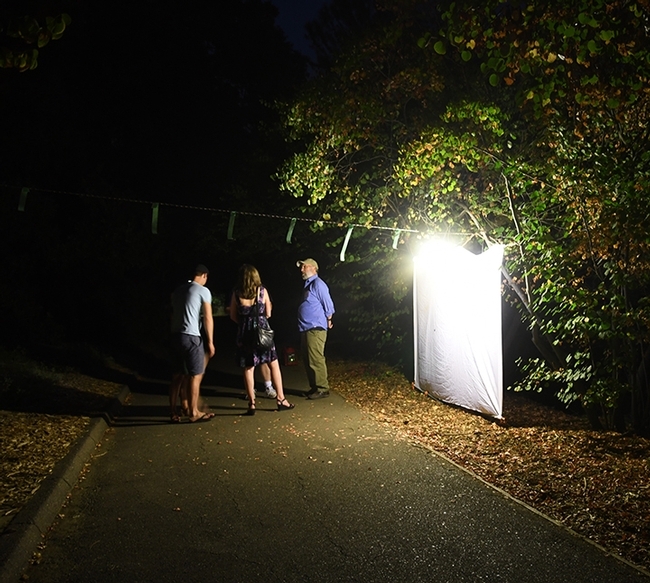
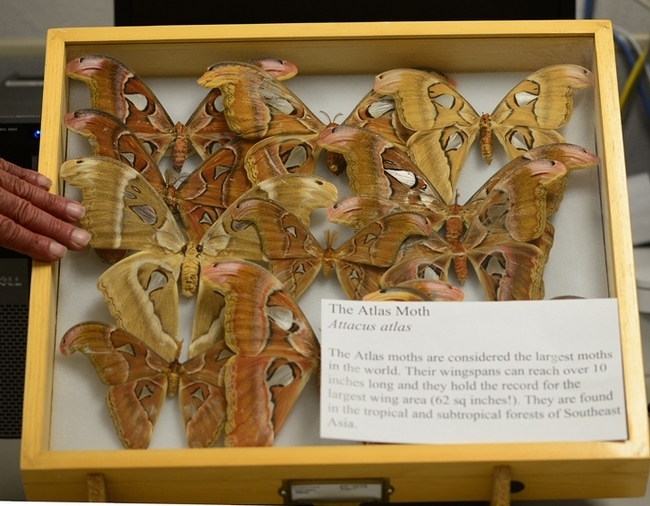
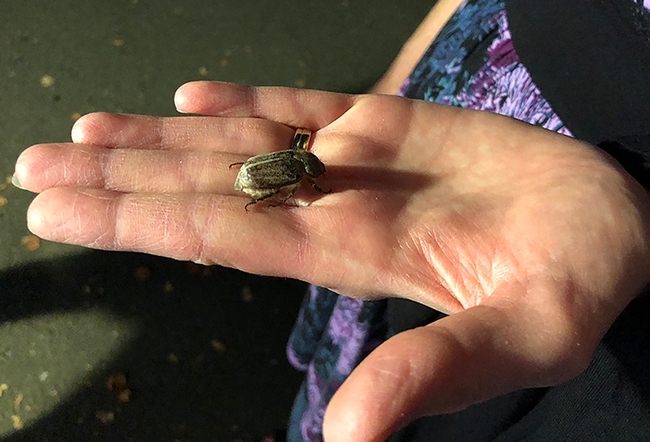
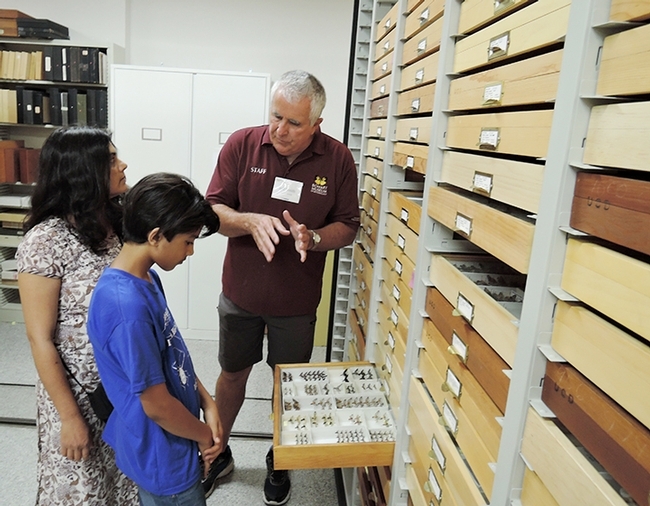
- Author: Kathy Keatley Garvey

A new display, designed and coordinated by Bohart associate and UC Davis biological sciences graduate Emma Cluff, showcases stick insects and insect digestion. A research grant donated by Brian Johnson, associate professor of entomology, funded the project.
“I have always thought stick insects were pretty amazing,” said Cluff, who worked on the project over a six-month period. “I loved making the display visually catching as well as informative. I spent a lot of time reading papers and communicating with graduate students who worked with Brian Johnson, and I enjoyed figuring out how to translate their science into terms that the public would find accessible.” The Johnson lab studies the genetics, behavior, evolution, and health of honey bees and currently focuses on the evolution and genetic basis of social behavior using comparative and functional genomics.
Stick insects, most abundant in the tropics and subtropics, belong to the order Phasmatodea and are found on all continents except Antarctica. They derive their name from the ancient Greek “Phasma,” meaning an apparition or phantom, referring to their resemblance to sticks or leaves.
The finished project, mounted on a wall, includes a wood sculpture of a stick insect by Leo Huitt of Woodland, and illustrations by UC Davis entomology student Karissa Merritt, who drew the anterior midgut, Malpighian tubules, crop and hindgut. The display also includes stick insect facts, with lift off tabs.
“People seem surprised that we know so much about stick insect digestion,” Cluff commented. “Visitors have also commented on how incredible it is that a fairly complex digestive system can fit in such a slender organism.”
In her display, Cluff explains cellulose and why it is difficult to digest. She defines cellulose as “a molecule made of linked sugars. It is found in plants and forms plant cell walls. This moleculre provides the rigid structure in plants, like stems and wood (this means that wood is made mostly of sugar!)”
Why is it difficult to digest? “Cellulose has a very stable structure and forms strong fibrous strands. Because of this, animals need enzymes (proteins which enable chemical reactions) to break the cellulose apart into sugars.”
This was her first experience designing an exhibit. “It was a really wonderful experience,” she said.
“Emma is very talented and I would really like to see her continue doing science outreach,” said Lynn Kimsey, director of the Bohart Museum and professor of entomology at UC Davis.
Cluff, from Turlock, plans to attend graduate school and become a marine biologist. “I love marine bio and I am also passionate about education so I would like to somehow combine the two. I always loved marine science as a kid, and taking a research course at Bodega Bay re-inspired me. I think marine science is so important for the future of our planet, and I also fell in love with research and the creativity of it.”
The Bohart Museum is located in Room 1124 of the Academic Surge Building on Crocker Lane. It is the home of nearly eight million insect specimens, plus a live “petting zoo” that includes stick insects, Madagascar hissing cockroaches, tarantulas and praying mantids; and a year-around gift shop.
Richard “Doc” Bohart (1913-2007), former professor and chair of the UC Davis Department of Entomology (now the Department of Entomology and Nematology), founded the insect museum in 1946.
The Bohart Museum is open to the general public Mondays through Thursdays, from 9 a.m. to noon and from 1 to 5 p.m., plus occasional, weekend open houses. Admission is free. The next weekend open house is from 1 to 4 p.m., Sunday, Nov. 18 and centers around urban entomology..
Further information is available on the Bohart Museum website at http://bohart.ucdavis.edu/ or contact (530) 753-0493 or bmuseum@ucdavis.edu.
